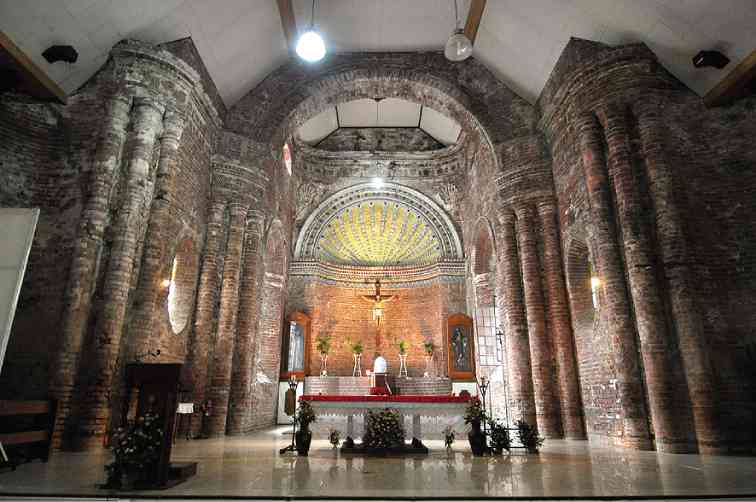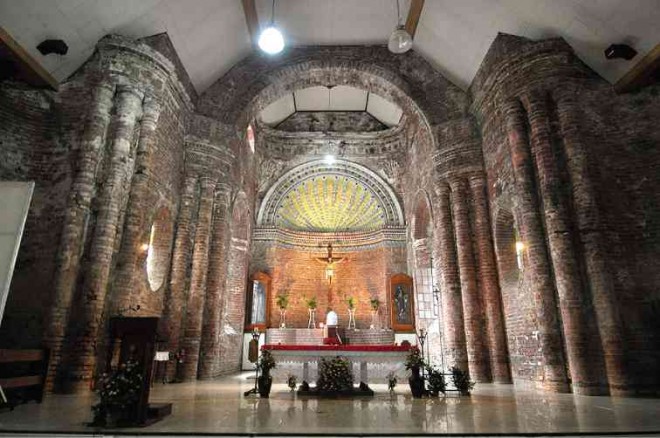
The fragility of heritage monuments, which face threats from both natural and manmade disasters, is ironically underscored during National Heritage Month every May.
On May 20, as part of the Taoid (Ilocano for “heritage”) festival, the National Commission for Culture and the Arts is conducting a heritage pilgrimage tour of churches declared National Cultural Treasures and Unesco World Heritage Site—but confined to four churches in Manila and Quezon City. Which is a pity, as there are more impressive churches in the provinces, and with far more precarious existence.
Iglesia Parroquia de San Matias in northern Isabela, for instance, is considered the most artistic brick structure in the country—but who knows about that?
Commonly known as Tumauini Church, the structure was built entirely of red bricks and done in the style of Late Baroque or Early Rococo. It has a four-story bell tower that looks like a wedding cake.

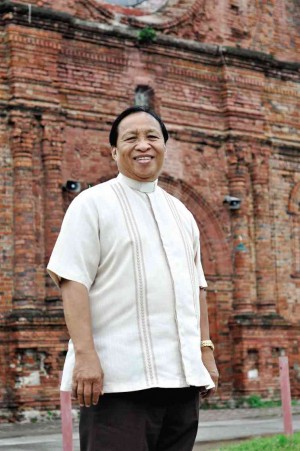
Since 2006, the church has been considered for addition to the Unesco World Heritage Sites under the Baroque Churches of the Philippines (Extension).
Unique structure
Tumauini Church was partly damaged during the war but it was repaired and faithfully reconstructed into its original form by the townspeople.
The old convento lies in ruins beside the church. Parish priest Fr. Angel Luga says its ongoing restoration is top priority. Meantime, he stays in a nondescript clergy house behind the ruins.
“It will be faithfully reconstructed in the old style of engineering,” says Father Luga.
That might take some time, he adds, as the source of red bricks is 30 km away.
The first church of light materials was built in 1707, when Tumauini was part of the parish of Cabagan. (For a time in the 1880s, Tumauini became the capital of the province of Isabela.) It was dedicated to St. Matthias, the disciple chosen to rank among the 12 Apostles after Judas’ suicide, whose feast day May 14 is the town fiesta.
The present ultra-Baroque church was designed and built by Dominican architect-friar Domingo Forto in 1784. Its curved pediment made it unique among churches built during the Spanish era. Construction was completed 21 years later.
Bricks were used since stones of good quality couldn’t be found in the area. Artisans from Pampanga were hired to craft the wooden mouldings for the clay inset of the bricks for the façade. Each brick was customized to fit the wall, numbered for the correct sequence in the design.
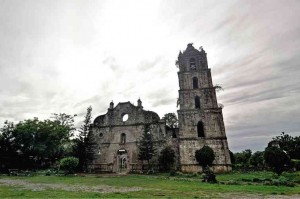
Church, built in 1624
On Feb. 24, 1989, the National Historical Commission declared Tumauini Church a National Historical Landmark. The National Museum later declared it a National Cultural Treasure.
Rich ornamentation
What we see now are mostly the original red bricks, most notably the rich heavy ornamentation of the rococo-baroque façade: flowers, leaves, ovules, hearts, sunbursts, wheels; squares and circles, oblongs and rectangles, curlicues; three long garlands, vegetal forms, clamshells; three saints in niches, one headless; eight pilasters; six mini reliefs of saints and cherubim, one cherub defaced.
Inside are 24 symmetrically arranged, neo-Corinthian faux columns; 10 arched windows, with white-green-yellow stained-glass panes adorned with yellow and blue clamshells and red crosses.
Beside the church is the School of St. Matthias, which offers free tuition through high school. There is a water-refilling station as a source of income to support the school. An annex is a museum of antique vestments and icons. The whole complex is fenced with ornamental red bricks.
Elsewhere in the province are ancient churches that look as pretty as any in the region: Church of Our Lady of the Visitation in Gamu, Guibang, built in 1768; Church of Our Lady of Atocha in Alicia town, built in 1849, fortress-like with buttresses and a squarish belfry, in olden days the refuge of the Yogads from the plundering Ifugaos.
But they’re no longer as intact as the Church of St. Matthias; their interiors are new.
“The church needs reinforcement, some strengthening, so it can withstand typhoons, earthquakes,” says Father Luga. “Kung may makatulong man…”
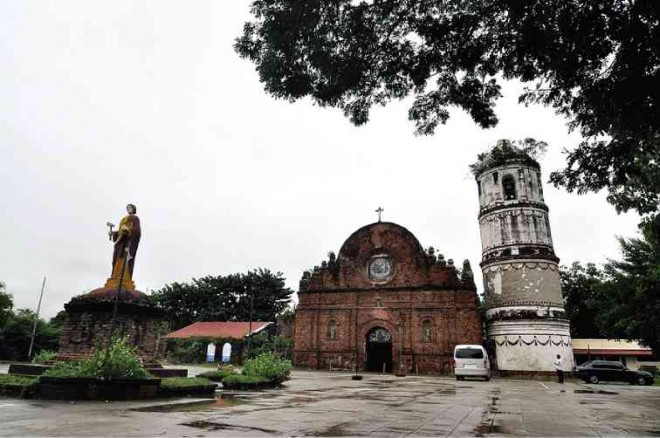
Time is of the essence, so this loveliest of structures wouldn’t go the way of the churches of Bohol.
Grim reminder
A grim reminder of what could happen to this national patrimony is to be found farther north, in Isabela’s oldest town, San Pablo, on the border with Cagayan province.
Built of adobe in High Baroque in 1624, San Pablo de Cabigan Church is the oldest in the province. In 1949, it was ruined by the biggest earthquake to hit Cagayan Valey. Three years later, its roofing was burned down.
In the 1950s, a smaller church (about a third of the original structure) was built within its shell.
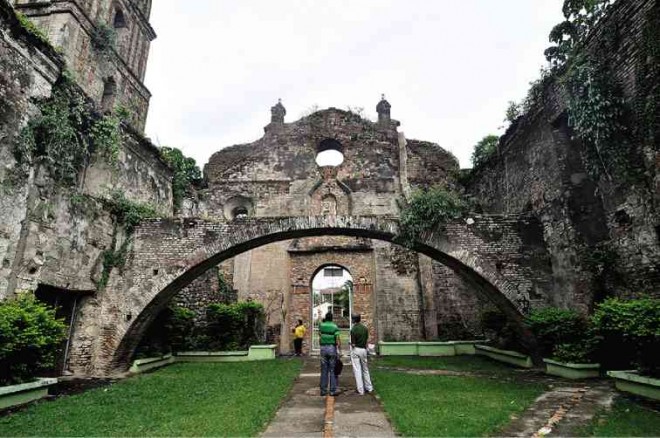
But one can still see features of the original church, such as the arch of the entranceway, the vigil room, the support of the choir loft, buttresses. A few are still intact but already half-swallowed by the earth.
Looming like a giant bas-relief is the frame of the original façade with niches containing icons of St. Paul, St. Vincent Ferrer and St. Isidore, now all defaced. The free-standing façade has an uncanny resemblance to the Ruins of St. Paul’s Cathedral in Macau, a World Heritage Site.
Fronting the church is a patio overgrown with grass. Based on the rubbles of the foundation, one can only imagine the width and length of the original church and the extent of the complex.
The parish priest stopped restoration four years ago because he was frustrated by the perennial diggings of sacred grounds, through the ancient walls and a tunnel toward the altar, even in the cemetery, reportedly conducted by certain persons looking for the legendary Yamashita treasure.
“Nawalan ng gana ang pari,” says municipal consultant Abraham Lauan.
Left relatively intact is the bell tower of six levels (counting the circular apex), the tallest in Cagayan Valley.
Globalizing concept
While natural catastrophes may be cited as the biggest enemy of heritage, human stupidity in no small way contributes to the large-scale pillage of cultural patrimony.
Last year in a Milan museum, one leg of the 19th-century plaster copy of the Greco-Roman sculpture “Drunken Satyr” fell off when a student tried to take a selfie while sitting on its lap.
In 2001 at Bamiyan Valley in Afghanistan, two giant Buddhas carved out of sandstone cliffs were dynamited by the Taliban upon order of Osama bin Laden, thereby obliterating exemplars of classical Gandhara art.
And, of course, who can forget 9/11?
It’s just as well that we now have a globalizing concept of cultural heritage, in this world of crumbling and passing.

